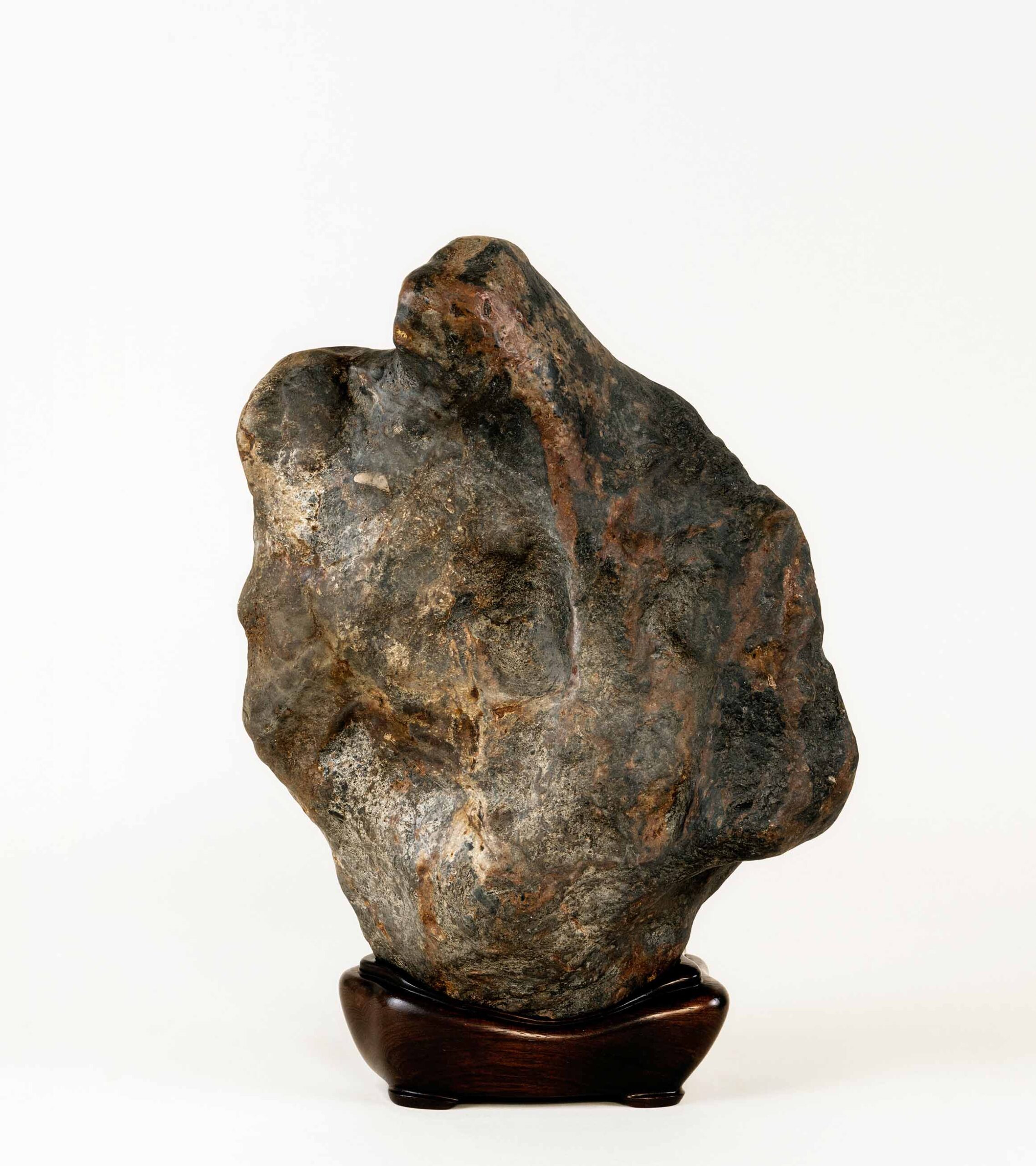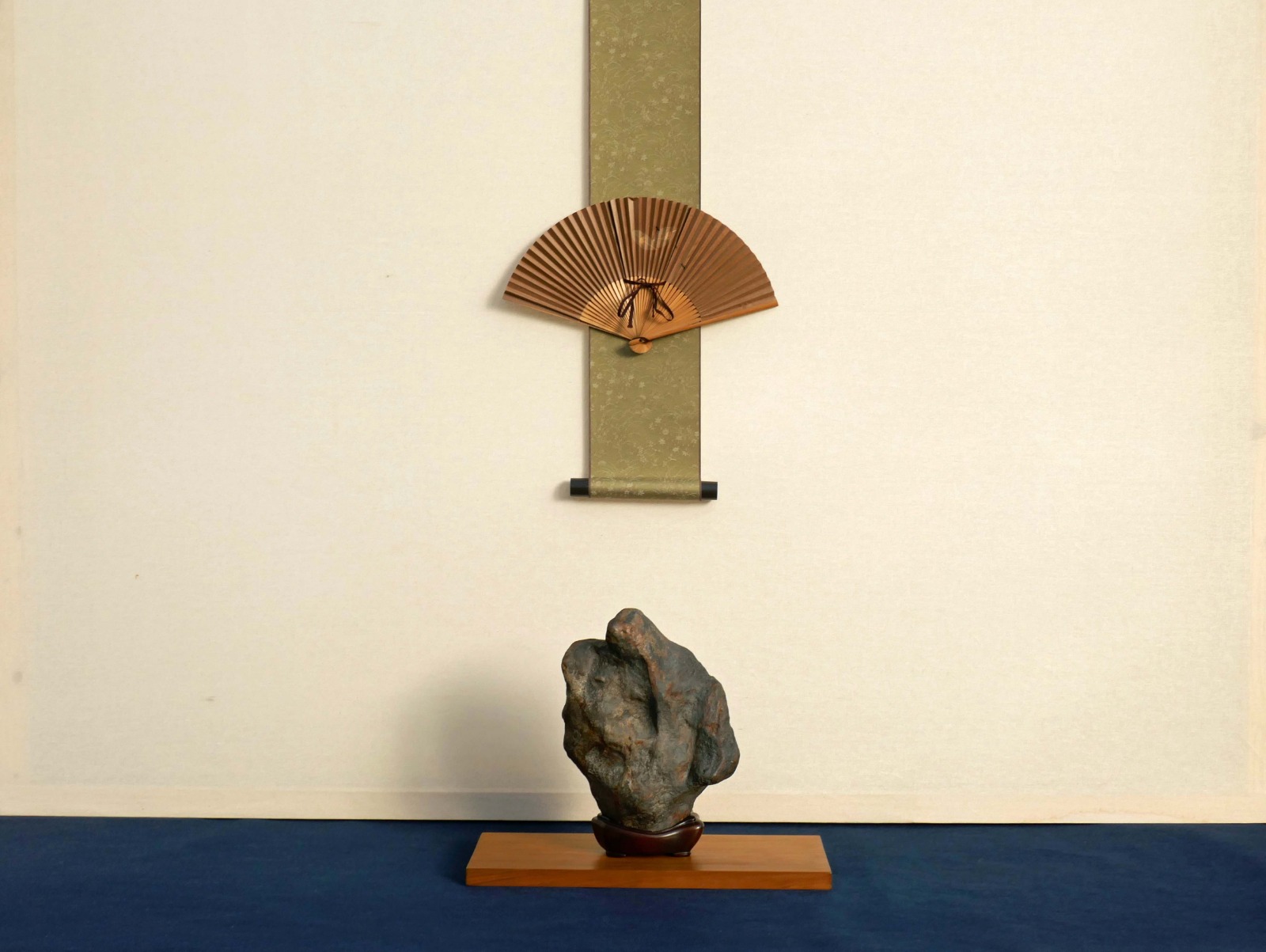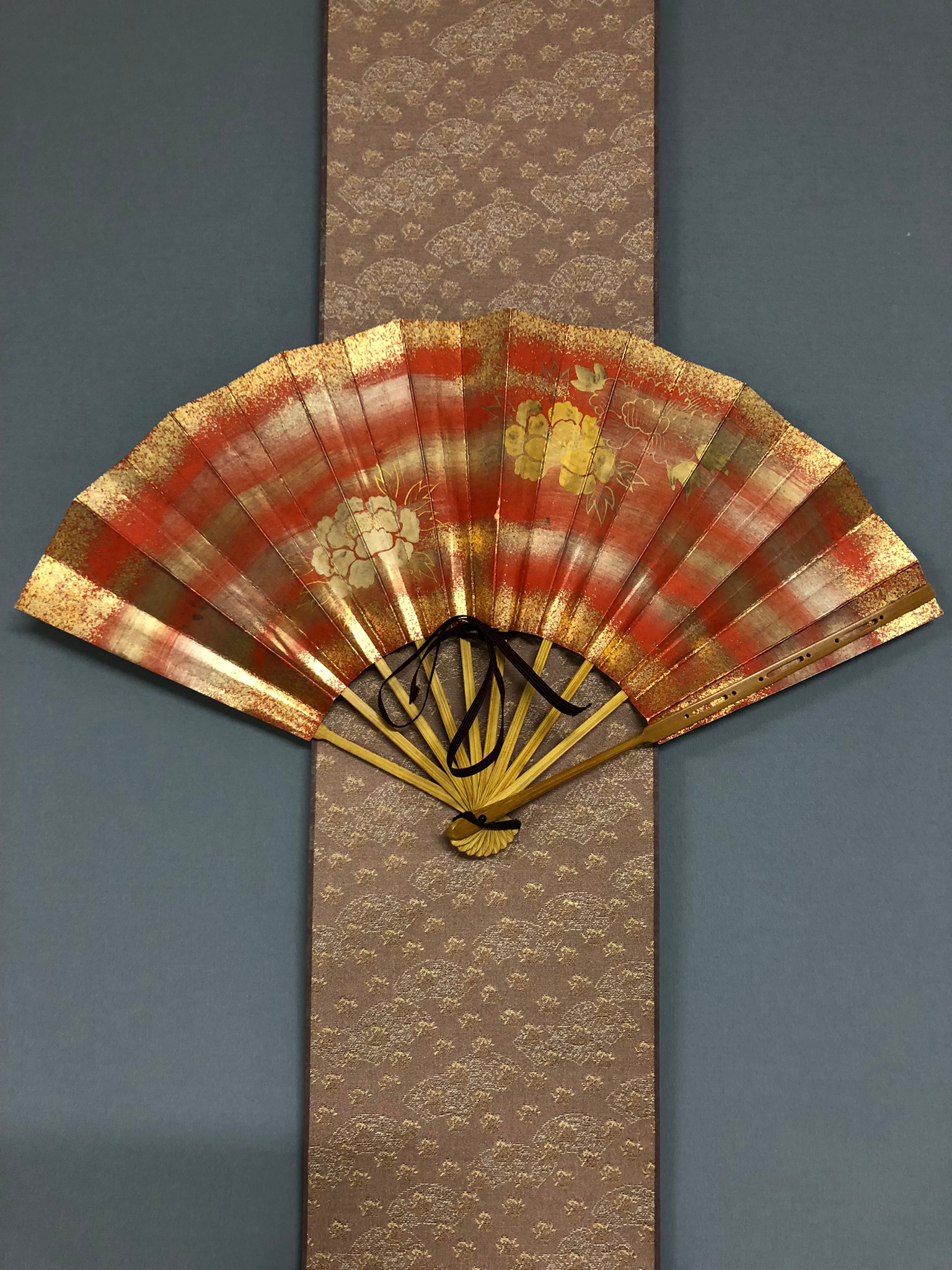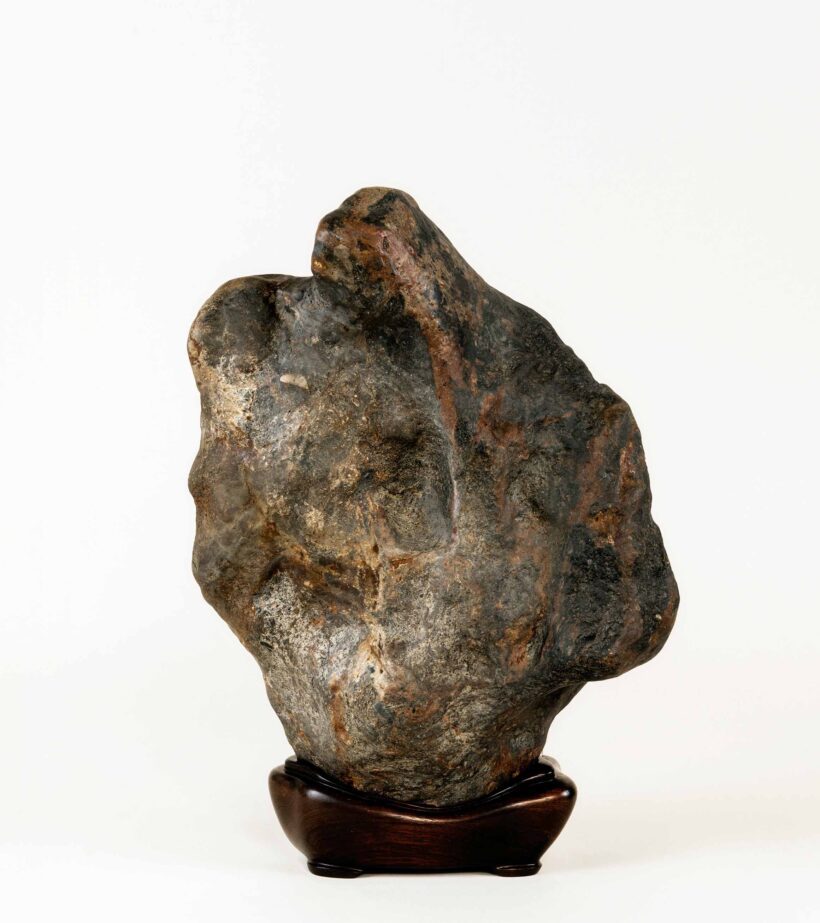Member
Mr. Giorgio Rosati
Classification
Object Stone – Keisho seki
Human shaped stone – Sugata ishi
Poetic name
‘Noh Kanze’ 観世能
Origin
Japan (Sajigawa ishi)
Measurements (cm)
L. 22 – D 12 – H 30,5
Kanze is one of the most renowned families Noh’s theater, descending from Zeami, the founder of Noh theater in 14th century.
It is now led by the 26th grand master Kiyokazu Kanze, and now the theatre stage is located in the redeveloped Matsuzakaya building at Ginza, Tokyo.
The stone was found in Saji river, central Japan, weight 9 kilos, and is 30,5 cm.high.
The daiza is made by master Harada Kazuya and is rosewood.
The slab under the stone is japanese cypress (Chamaecyparis obtusa), locally called Hinoki, traditionally used to build the floor of Noh theater stage.
The fan is the actor’s necessary tool, that suggest different feelings or actions.



Socio
Giorgio Rosati
Classificazione
Pietra Oggetto – Keisho seki
Pietra a forma umana – Sugata ishi
Nome poetico
‘Noh Kanze’ 観世能
Luogo di origine
Giappone (Fiume Saji)
Dimensioni (cm)
L. 22 – D 12 – H 30,5
Kanze è una delle famiglie più note della pratica del teatro Noh, discendente da Zeami, il fondatore del teatro nel quattordicesimo secolo.
Attualmente è diretto dal 26° discendente della famiglia, il Gran Maestro Kiyokazu Kanze, e il teatro è situato nell’edificio ristrutturato Matsuzakaya a Ginza, Tokyo.
La pietra proviene dal fiume Saji, Giappone centrale, del peso di 9 chili, alta 30,5 cm.
Il daiza in legno di palissandro, è opera del Maestro Harada Kazuya.
La tavola su cui poggia la pietra è in legno di cipresso giapponese (Chamaecyparis obtusa), chiamato localmente Hinoki, legno con il quale tradizionalmente è costruito il pavimento del palcoscenico del teatro Noh.
Il ventaglio è invece l’inseparabile strumento dell’attore, che, a seconda di come viene manovrato, assume differenti significati simbolici.

